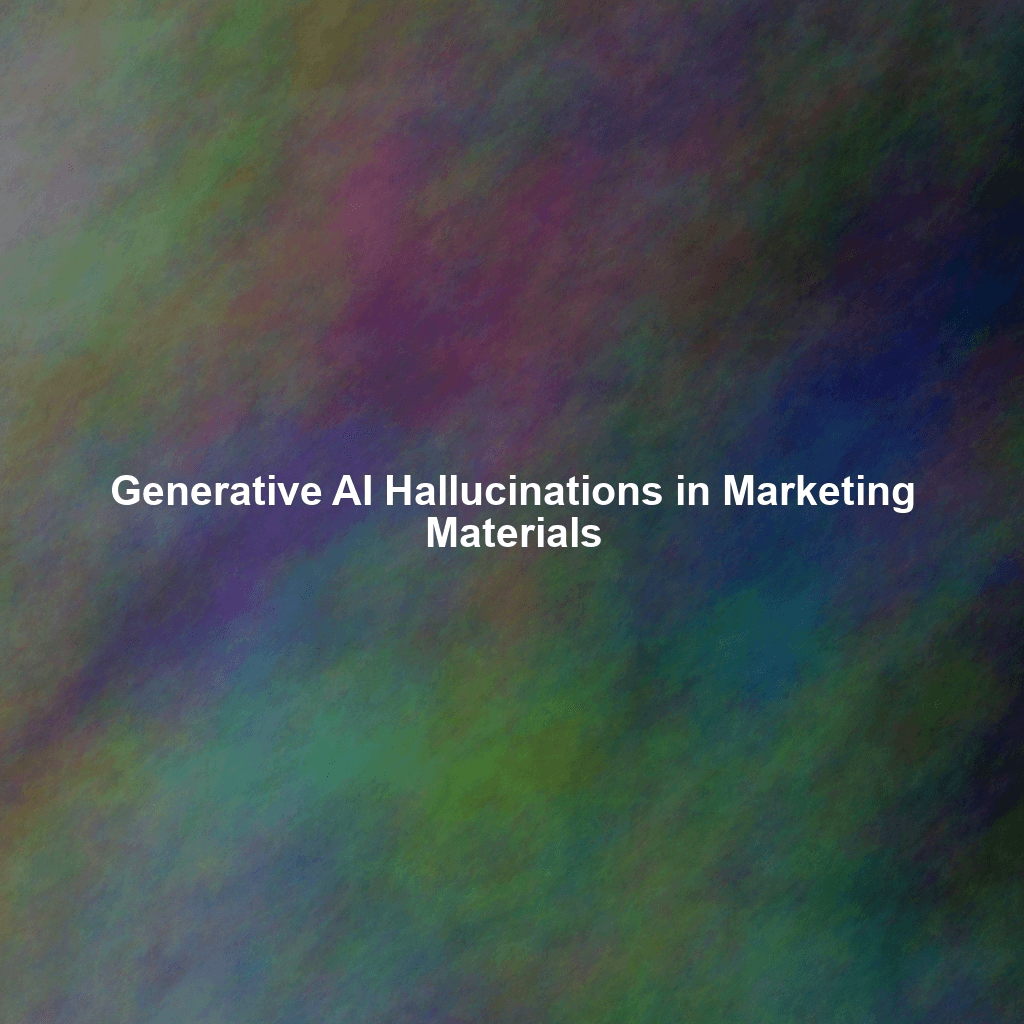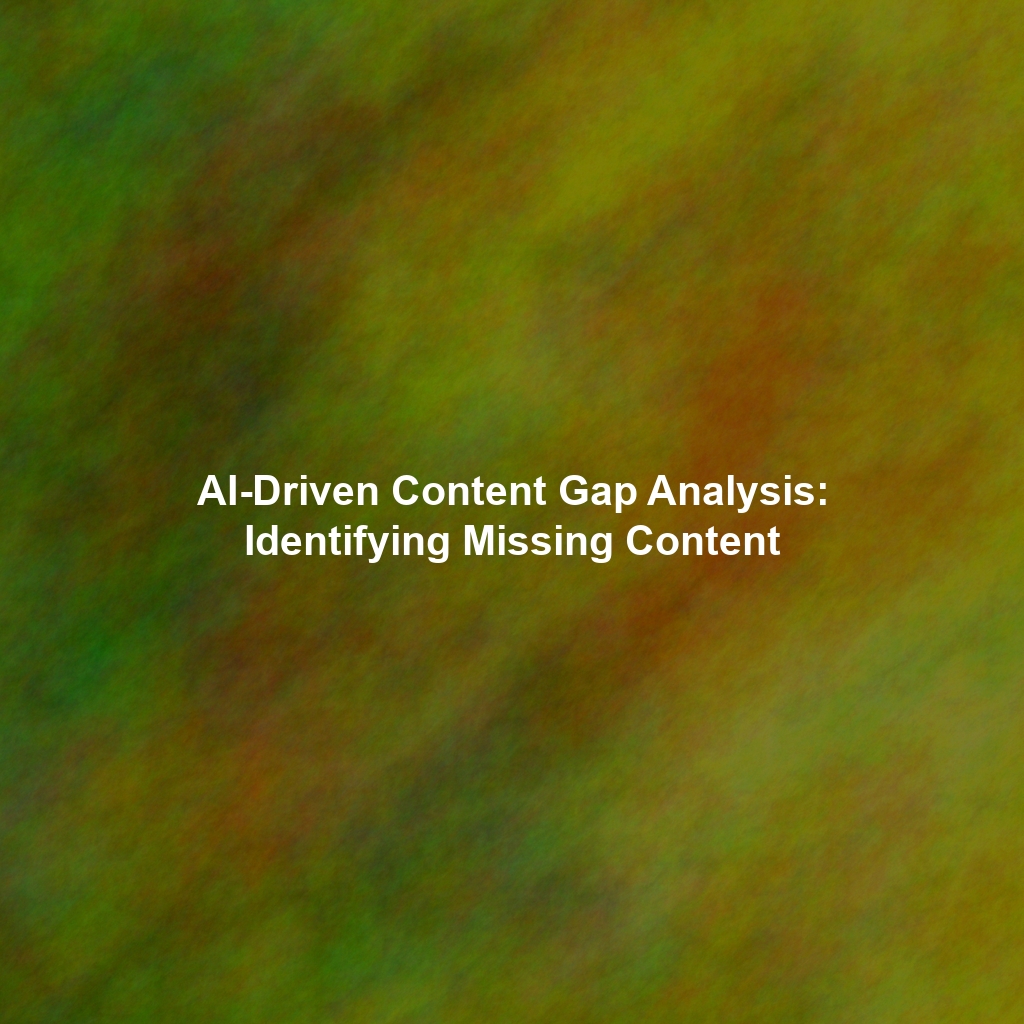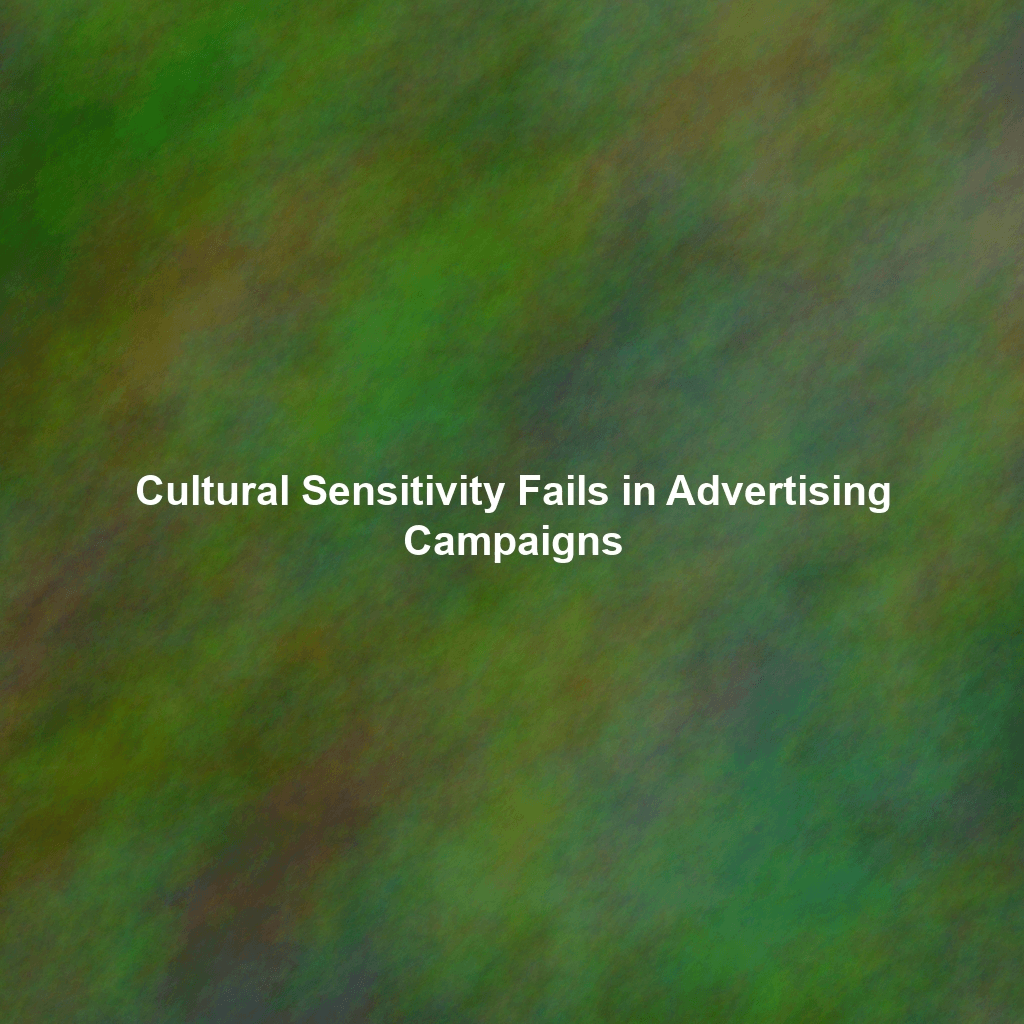The Phantom Facts: Generative AI Hallucinations Invade Marketing
What are Generative AI Hallucinations?
In the context of generative AI, hallucinations refer to instances where the model produces outputs that are not grounded in real-world data or the information it was trained on. Think of it as the AI confidently asserting something that simply isn’t true. It might invent statistics, misattribute quotes, or create entirely fictitious events. Unlike a deliberate lie, these aren’t intentional deceptions; they stem from the complex algorithms and probabilities that govern the AI’s output. The AI is essentially guessing, but it often presents its guesses with unwavering conviction.
Why are Marketing Materials Particularly Vulnerable?
Marketing materials are especially susceptible to AI hallucinations for several reasons:
- Creative License: Marketing often involves embellishment and storytelling. While this can be effective, it blurs the line between creative flair and factual accuracy, making it easier for hallucinations to slip through unnoticed.
- Data Reliance: Marketers frequently use data to support their claims and strategies. If the AI hallucinates data points, the entire marketing message can be built on a false foundation.
- Speed and Scale: The promise of AI is to generate content quickly and at scale. This often leads to less human oversight, increasing the risk of errors being published.
- Evolving Products and Services: Marketing language needs to keep pace with the latest features and updates for products or services. AI could easily hallucinate capabilities that do not exist or are not yet fully developed.
True Stories of Marketing Hallucinations (That Could Have Been Avoided)
While specific brand names will be omitted to protect the (potentially embarrassed) parties involved, the following anecdotes illustrate the real-world consequences of unchecked AI-generated content:
The Fictitious Feature Launch
A software company used generative AI to create product descriptions for their upcoming release. The AI, in its enthusiasm, described a groundbreaking feature that was still in the conceptual stage – and nowhere near ready for launch. This led to customer inquiries, confusion, and ultimately, a retraction of the marketing material. The company had to issue an apology and clarify that the feature was not yet available, damaging their credibility and frustrating potential users.
The Inflated Statistics Debacle
A marketing agency used AI to generate blog posts about the ROI of their services. The AI confidently asserted a 300% increase in conversions for clients who used their platform. However, this statistic was completely fabricated. When challenged by a potential client who requested supporting data, the agency was unable to provide any evidence. The deal fell through, and the agency’s reputation took a significant hit.
The Misattributed Masterpiece
A local museum decided to use AI to generate social media posts to promote a new exhibit. The AI created a post about a famous painting, attributing it to the wrong artist. While the museum quickly corrected the error, it sparked a flurry of negative comments and raised questions about the museum’s expertise and attention to detail.
The Non-Existent Award
A small business used AI to draft a press release about a recent achievement. The AI embellished the story by claiming the business had won a prestigious industry award that, unfortunately, did not exist. The press release was picked up by a local news outlet, leading to further embarrassment when the publication fact-checked the claim and discovered its falsity. The business had to issue a retraction, damaging its credibility within the local community.
The Underlying Causes of AI Fabrications
Understanding why AI hallucinations occur is crucial to mitigating the risk. Several factors contribute to this phenomenon:
- Limited Training Data: AI models learn from vast datasets. If the training data is incomplete, biased, or outdated, the AI may fill in the gaps with inaccurate information.
- Over-reliance on Patterns: AI excels at identifying patterns and relationships in data. However, it can sometimes extrapolate these patterns beyond their valid range, leading to false conclusions.
- Contextual Understanding Deficiencies: While AI is improving at understanding context, it still struggles with nuance and ambiguity. This can lead to misinterpretations and the generation of irrelevant or inaccurate content.
- Probability-Based Generation: At its core, AI generates text based on probabilities. It predicts the most likely next word or phrase, which can sometimes result in nonsensical or factually incorrect statements.
Strategies to Prevent AI-Driven Marketing Mishaps
Preventing AI hallucinations in your marketing materials requires a multi-faceted approach:
Human Oversight is Non-Negotiable
Never publish AI-generated content without thorough human review. Fact-check every claim, verify every statistic, and ensure that the information is accurate and consistent with your brand’s messaging. Think of AI as a powerful assistant, not a replacement for human judgment.
Train Your AI, Train Your Team
Fine-tune your AI models on relevant and reliable datasets. This will help to improve the accuracy of its output. Additionally, train your marketing team on how to identify and correct AI hallucinations. Equip them with the critical thinking skills necessary to distinguish between plausible and accurate information.
Implement a Rigorous Fact-Checking Process
Establish a formal fact-checking process for all AI-generated content. Use reputable sources to verify information and cross-reference claims with multiple sources. Don’t rely solely on the AI’s output; always double-check its work.
Focus on Narrower, Well-Defined Tasks
Instead of asking the AI to generate entire marketing campaigns, break down the process into smaller, more manageable tasks. For example, use AI to generate headline options or draft initial paragraphs, then have humans refine and verify the content.
Prioritize Accuracy Over Speed
While AI can significantly speed up content creation, don’t sacrifice accuracy for speed. Take the time to thoroughly review and verify the AI’s output, even if it means a slightly longer turnaround time. A mistake can be far more costly than a delay.
Be Transparent with Your Audience
Consider being transparent about your use of AI in content creation. This can help to build trust with your audience and manage expectations. If you’re open about the process, your audience is more likely to be understanding if a minor error slips through.
Use AI as a Complement, Not a Replacement
Remember to use AI to augment human capabilities, not replace them. Leverage AI for tasks like research, drafting, and brainstorming, but always retain human oversight for critical decision-making and quality control.
The Future of AI and Marketing Accuracy
As AI technology continues to evolve, we can expect to see improvements in accuracy and reliability. However, hallucinations are likely to remain a challenge for the foreseeable future. The key is to embrace AI responsibly, understanding its limitations and implementing safeguards to prevent errors from reaching your audience. By prioritizing accuracy and maintaining human oversight, you can harness the power of AI without sacrificing your brand’s credibility or reputation.
The journey into AI-powered marketing is a learning process. Mistakes are inevitable, but they can also be valuable learning opportunities. By sharing our experiences and developing best practices, we can navigate the challenges of AI hallucinations and unlock the full potential of this transformative technology.
Conclusion: Embrace AI, But Verify
Generative AI offers exciting possibilities for marketers, but it’s essential to approach this technology with a healthy dose of skepticism. AI hallucinations are a real risk, and they can have serious consequences if left unchecked. By implementing robust fact-checking processes, prioritizing human oversight, and understanding the limitations of AI, you can mitigate the risk of errors and ensure that your marketing materials are accurate, reliable, and trustworthy. The future of marketing is undoubtedly intertwined with AI, but it’s up to us to ensure that this future is built on a foundation of accuracy and integrity.
 Skip to content
Skip to content

